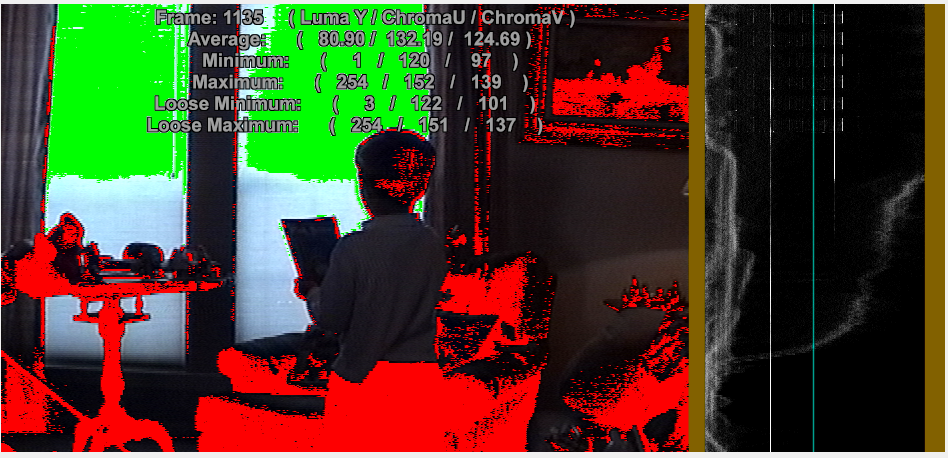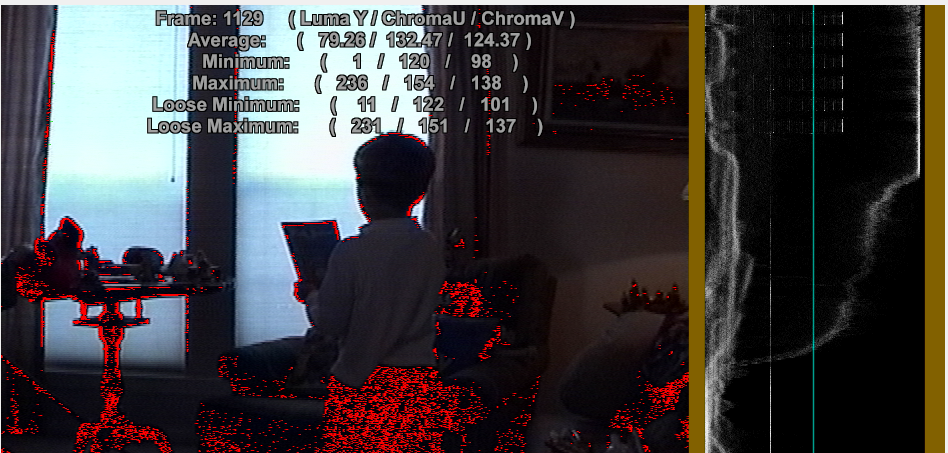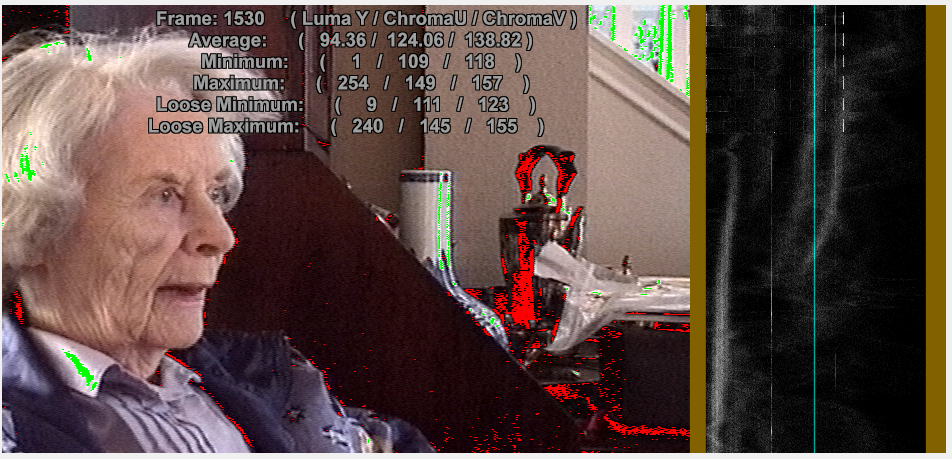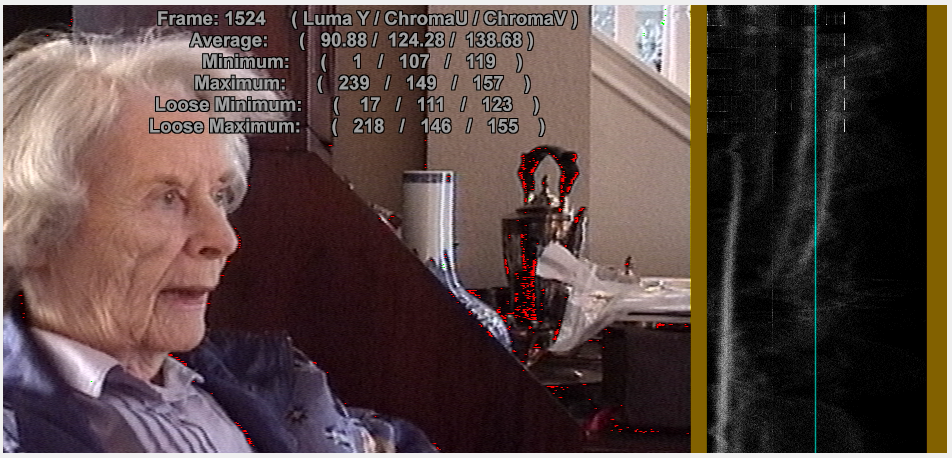Occasionally I still come across the odd tape from friends or family. Recently, I had to drag out my analog equipment again, and what a hassle. I forgot just how big and clunky VHS players are, plus wires everywhere. Ugh. Anyway, up until now I have always used my beloved Canopus ADVC-300. (I know, hated by the many elitists on this forum. But what's not to love? It simply works. And for quick test, I loaded my Windows 10 image just to see what would happen, and the ADVC-300 worked flawlessly. There is something to be said about hardware that only requires a working IEEE-1394 port.)
Well, I came across this little doohickey on Amazon, and for only $35 and free shipping with Prime, I couldn't resist:
https://www.amazon.com/gp/product/B00428BF1Y
Now, this is only an ADC converter (at least I can't imagine anything else crammed into such a small form factor) and needs a software encoder for captures unless you are feeling adventurous and don't mind lossless captures hogging your hard drive. And for NTSC SD captures that is >1 GB per minute of video. I have always been curious about just what is to be gained from a lossless 4:2:2 workflow versus 4:1:1. So here are some quick sample videos of a capture I did.
These are from an old Sony Hi8mm XR (for those who don't know, XR supposedly offered 10% more resolution than non-XR) camcorder with S-Video out. No other gear was used besides the GV-USB2 and ADVC-300. And since the Canopus is the only other capture device I own, it is my only comparison. The only thing I did to the GV-USB2 video is convert it to UYVY.
As far as my impressions: I have to admit it is really hard to tell which is better. They both have a lot of noise that is a function of the camcorder circuitry. The ADVC-300 has a little bit of green cast but that is easily fixed in post. The main benefit I can see is 4:2:2 holds up better for serious grading. Although for $35 compared to nearly $300 for the ADVC-300 on ebay, it is hard to make a case for the Canopus. But then, I bought mine ten years ago long before USB2 devices came along.
Anyway, enjoy. And let me know what you think.
Try StreamFab Downloader and download from Netflix, Amazon, Youtube! Or Try DVDFab and copy Blu-rays! or rip iTunes movies!
+ Reply to Thread
Results 1 to 18 of 18
Thread
-
-
Lucky! This device is only marketed in Japan. The only sellers on Amazon are Marketplace and the lowest price at the moment is $54 shipped. Lowest sold price on eBay was $42 over the past few months, with "7-28 day" overseas shipping.
Both samples have clipped brights. The GV-USB2 sample is slightly worse in this regard. I think some shots in better lighting with moving subjects would prove more interesting. Some examples of scenes where I consider the DV compression artifacts obvious (albeit using Sony's compressor and not Canopus').
Seems the Hi8 XR playback cam has TBC and (at least chroma) DNR enabled, so no opportunity to see the ADVC-300's TBC faults and GV-USB2's likely poor handling of un-TBC'd video. -
I ordered mine, and it was delivered three days later. Whoop! So apparently it came from a warehouse somewhere in the US. And yes, it is a Japanese product with absolutely no translations, even the CD driver software was all Japanese. But there was a helpful review on Amazon that told me what to click on. And once the driver is installed, there is nothing else to configure.
My understanding is Hi8mm S-video is much more stable than VHS/S-VHS and rarely benefits from a TBC.
As for the clipped brights, only the specular from the silver knob is clipping and that is perfectly acceptable. Regarding the poor lighting and static shot, that was on purpose. I was only interested in the chroma resolution differences and noise performance, so for me that video was the perfect test.
I will probably post more samples later with actual footage. -
This is rather disappointing, but the composite video on the GV-USB2 doesn't appear to work unless I am doing something wrong. Anyone else have problems with getting the composite video to work?
-
I need to select composite or s-video in whichever capture software I use with my Hauppauge USB device. It's never both.
-
OK, I admit. I am bit of a newb when it comes to capturing. I am using VirtualDub. Is there some sort of setting in there that I am missing? I poked around and didn't see anything. Thanks.
EDIT: I found the Composite Video vs S-Video option in vdub. Still not working. Ugh.
EDIT2: I finally got it to work. Guess it needed a little kick. Thanks so much for helping out a newb!Last edited by SameSelf; 7th Aug 2016 at 11:03.
-
Here is some actual footage from a VHS tape that is about 20 years old. I don't know much about the tape other than it was semi-professionally produced and that it hasn't been viewed except for maybe a couple of times. I played it on a generic VHS player using the composite out. As far as I know, the player has no built in TBC or DNR. No other gear was used. Straight capture using the ADVC-300 and GV-USB2 in Virtualdub. Default settings were used for the ADVC-300.
Feedback welcome. -
Cool, thank you for posting this comparison.
The GV-USB2 sample has lots of wiggling caused by lack of TBC. The ADVC-300 sample also has plenty, albeit less wide, and lines aren't truly straightened.
The ADVC-300 has blocking and mosquito noise all over the place. It looks grainy while the GV-USB2 looks smooth. I think the grainy appearance is mainly due to the mosquito noise...? Below I've marked a couple sections where the ADVC-300 has smeared away the floor. Use CTRL and + to zoom these to see what the hell I'm talking about.
The ADVC-300 has less rainbowing and dot crawl, and is slightly sharper. Below, besides the part I marked, the man's face is another area that looks particularly less blurred. His nose has a green rainbow on the GV-USB2 frame.
Scripts used:
Code:AVISource("Grad_GVUSB2_Trim.avi") Shift(U=1,L=2).ConvertToYV16().SmoothTweak(saturation=1.2) #match DV SeparateFields() ConvertToYUY2().AlignExplode("GV-USB2 + tweaks")Code:AVISource("Grad_ADVC300_Trim.avi",pixel_type="YUY2") SeparateFields() AlignExplode("ADVC-300") -
Thanks for looking. I thought this would be an interesting stress test of the GV-USB2: 1) lots of straight lines and dark regions 2) no TBC 3) composite video and 4) a situation many might find themselves in.
I agree the wiggle is higher in the GV-USB2. In the frame of the guy, the column has a much cleaner edge in the ADVC-300 cap. But wouldn't it be strange if the GV-USB2 didn't exhibit problems from lack of a TBC? I don't own a TBC, so I can't test how much the GV-USB2 would benefit from one.
As for the green rainbow on the guy's face, after closer inspection, I think that is the actual lighting due to reflections off his banner as he moved under what were likely halogen spotlights because it goes in and out and was present in the ADVC-300 cap as well. Although one has to be somewhat suspicious of the ADVC-300 because it gives everything a slightly green cast. That is my biggest complaint, but again it is easily fixable in post.
EDIT: Lastly, I have not done a long capture with this yet. So, I don't know how audio/video sync holds up yet.Last edited by SameSelf; 7th Aug 2016 at 20:44.
-
I have a question about the I-o data GV-USB2. Does it have processing amp controls? In other words, within Virtualdub can you adjust brightness, contrast, etc? I am also interested in how it compares to the Hauppauge 610 USB-Live 2 which I am currently using.
-
Hi, VideoDoc, sorry for the late reply. But yes, from what I can tell with some quick testing, you can access the proc amp controls within vdub and changing them does impact the image.
Unfortunately, I cannot comment on how this compares to the Hauppage 610 USB-Live 2 as I do not own that device. But if I were to speculate on how these two devices differ, this would be my guess:
- The Hauppage device uses whatever ADC chip that Hauppage uses
- The I-o Data GV-USB2 uses a Grass Valley ADC chip, hence the GV moniker
It is partly what attracted me to the I-o Data device because I own the Canopus ADVC-300 and have always loved that unit. -
-
Awesome. If you pick one up, I would be very interested in seeing some comparison caps if you have the time.
-
-
Given that vdub has audio sync issues, I looked for another solution and stumbled across AmaRecTV which supposedly does not have audio sync issues. It took me lots of fiddling to get it to work, so I thought I would post here what I had to do.
1. Download AmaRecTV version 3.10. For some reason VH mirrors a very old version.
I did all this on a Win7 x64 machine. But from what I read on the web, I-o Data has Win10 drivers for the GV-USB2. I only did a quick cap test and everything seemed to work properly. I have no idea when I will find time to do a full hour long capture to test if audio stays in sync.
2. Download and install a suitable lossless YUV422 codec e.g. lagarith, huffyuv, or utvideo. I didn't have any of those installed because I stopped using lossless codecs a while ago. So I was a little annoyed that I had to install one. For some reason, AmaRecTV will not record to uncompressed UYVY and it took me a while to figure out that was the source of my problem.
3. Go to the configuration dialogs and be sure to configure all the settings. They are fairly straightforward for anyone familiar with video. But, for those needing a little more handholding, this guide is useful:
http://iotku.pw/gvusb2-guide/
4. Once everything is configured properly, it should be just as simple as hitting play on your player and the record button on the AmaRecTV console.
5. The Device Settings on the Graph 1 (Device) tab provide proc amp access.
6. Error messages: if you get an error message pop up after exiting the configuration menu or when trying to record, more than likely there is an issue with your codecs, or the video/audio settings are messed up. For example, I ended up choosing GV-USB2 Analog Capture instead of GV-USB2 Analog WaveIn for the Audio Capture Device in Graph 1 (Device). Don't give up, just check over everything carefully, and eventually it will work. -
What were the procamp settings you used for the GV USB2? Im going to do a few VHS tapes like yours and would be interested to know. Or if you did any 8mm or Hi8 tapes, the procamp settings would be interesting to hear. Or did you just go with the default brightness 128-contrast 105-sharpness 16?
Hey, did you ever have a chance to mess with the procamp too? I'd like to hear what you found. -
TBH I have packed it away with the rest of my analog gear. I just don't deal with many tapes these days. But I can say that I never felt the need to fiddle with the settings. Of the few caps that I did the exposure was fine and if there were clipped whites/blacks it was due to poor lighting and no amount of proc amp fiddling would bring them back.
-
Oh ok. I'm doing a whole lot of tapes and have been playing with the procamp. This is the worst shot I've found, so any detail Ive gotten back isnt much either but considering the hundreds of hours of tape I'll be digitizing with this procamp, I think its been worth the effort.
default brightness 128 contrast 105

brightness 134, contrast 92

I would rather lose a bit of detail in darks than lights.
Even in decently lit shots like the outdoors, I think that setting brings out a little more detail, and makes it easier to see things in shadows or lights that would otherwise be lost. The trade-off is that some of the brighter colors lose a tiny bit of their "pop", in my opinion at least.
I think the people look slightly more realistic too, the default sort of washes out some colors.
default 128-105

134-92

I'll admit its not perfect and Im far from an expert but I think its good enough for my purposes.Last edited by videon00b; 10th Oct 2017 at 18:47.
Similar Threads
-
Help with I-O Data, GV USB2
By StrangeParoxysm in forum Video Streaming DownloadingReplies: 2Last Post: 3rd Jan 2016, 17:36 -
How to capture video chunks frames of data in realtime from HVR 2250?
By rshapiro in forum CapturingReplies: 19Last Post: 27th Aug 2014, 05:41 -
Seeking HDMI -> USB2 capture device with quick pause ability?
By EmmB in forum CapturingReplies: 31Last Post: 25th Jun 2014, 11:03 -
Help setting up NTSC capture at 60 fps
By zorgkang in forum CapturingReplies: 31Last Post: 5th May 2014, 16:24 -
IVTC on NTSC capture of PAL video?
By StrobeLightEpileptic in forum Video ConversionReplies: 22Last Post: 1st Nov 2013, 22:15



 Quote
Quote
